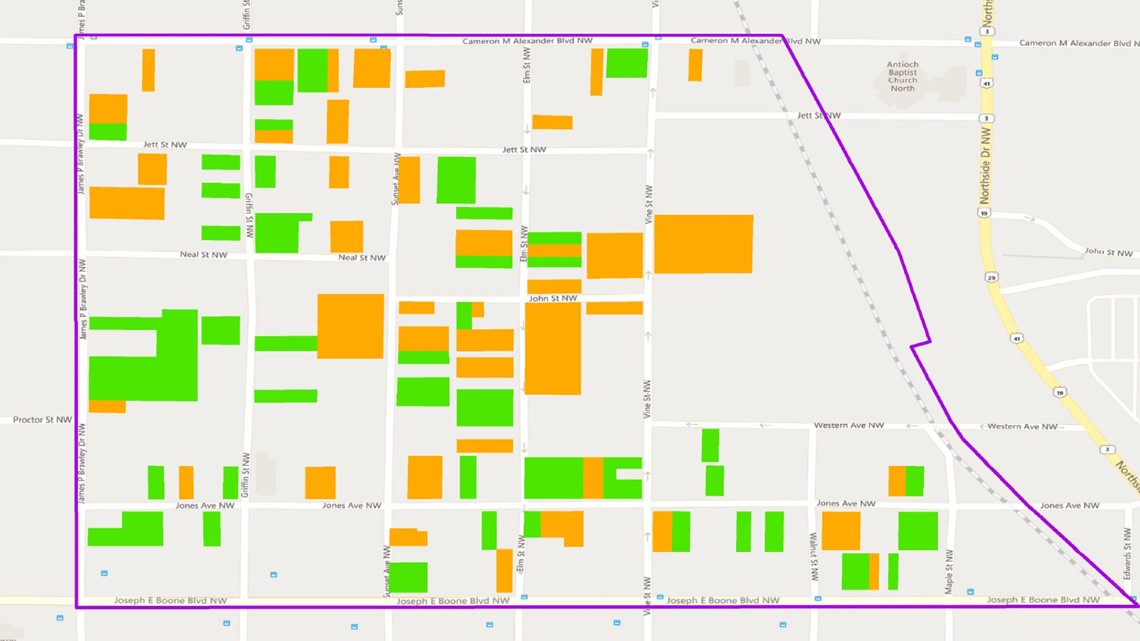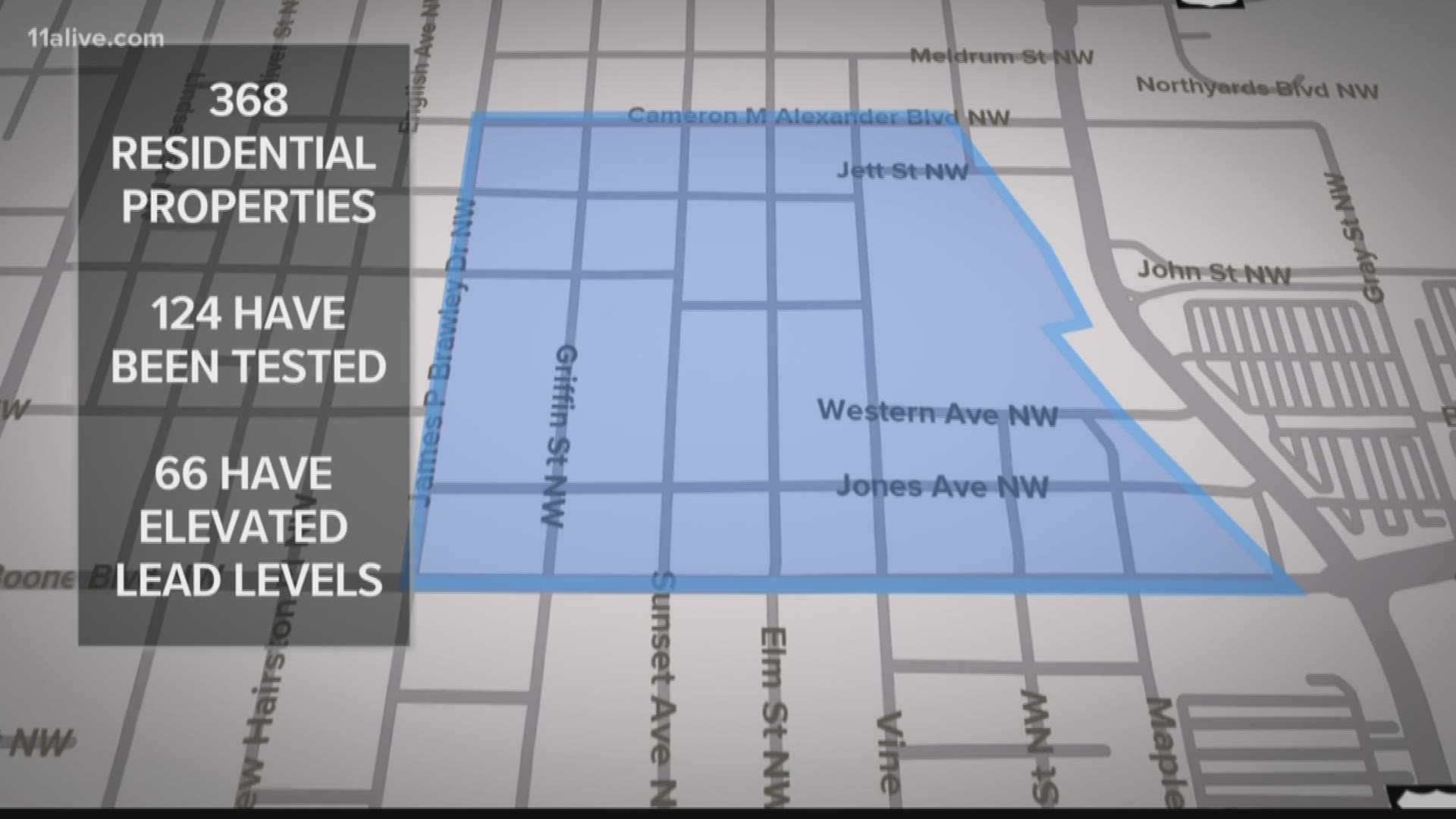ATLANTA — Tangela Nash's yard is being wiped away.
"Trees, and you see all this brush right here - that was all filed to that line back there," Nash described, pointing out where crews cleared her property.
She says that six months ago, the EPA tested her soil, and found lead likely to be decades old - and above levels recommended for a residential area.
"I'm happy someone caught it," she said. "I'm shocked that no one found it and appreciate what they're doing to fix it."
The Environmental Protection Agency is starting to clear away the lead-contaminated soil from dozens of homes on Atlanta's Westside, including Nash's.
This week the work began at homes along Elm Street, near Mercedes-Benz Stadium.
The EPA stepped in after Emory University students shared data showing elevated lead levels in the soil of the Westside neighborhood. Researchers believe the lead has been in the soil for decades.
The EPA believes slag is to blame. That is waste from an industrial refining process.
When land in the area was leveled to build houses decades ago, homes were built on top of the lead.
The EPA is focused on the area within the boundaries below, around the English Avenue and Elm Street area. There are so many properties in the area that the EPA needs to go through; we're told this entire project will take at least a year.


There are 368 residential properties between Joseph E. Boone Boulevard NW, James P. Brawley Drive NW, Cameron Alexander Boulevard NW and the old CSX rail line. The EPA has tested soil on 124 lots so far. Of those, 66 had elevated levels of lead.
11Alive News talked with homeowners like Nash, Tuesday, as crews starting working on their yards. The crews were seen removing a full foot of soil, as well as bushes and trees, which will later be replaced.
But, Chuck Berry with the EPA said the process has not been without hurdles.
"Getting access to the property remains our number one challenge. Trying to contact the homeowners," Berry said.
He said only seven percent of properties in the area are owner-occupied. He wants to talk with the owners, though, of every property.
"Let them know what we are doing is at tax-payer expense, that we aren't seeking any enforcement against anybody for this and what it can result in is a safer property for them and their tenant," he explained.
On average, Berry said it takes around a week to clear a property, and then restore it visually to appear the same, or better.
Nash, though, said she is concerned about the health of her neighbors, especially children.
"I've never even got tested for lead. That might be something they want to start doing in the neighborhoods," she said.
The EPA said a doctor, or local health department, can assist with testing for lead. And anyone who owns a home or rents within the boundaries of the project - if they haven't had their soil tested yet - the EPA will come to them, and take a small soil sample to get some test results.
For more information on this project, visit the EPA website.
MORE HEADLINES:

